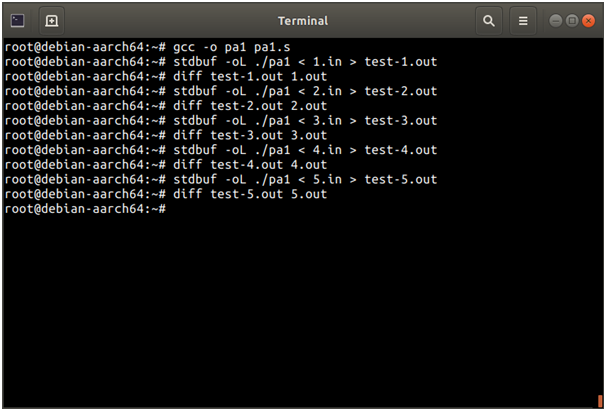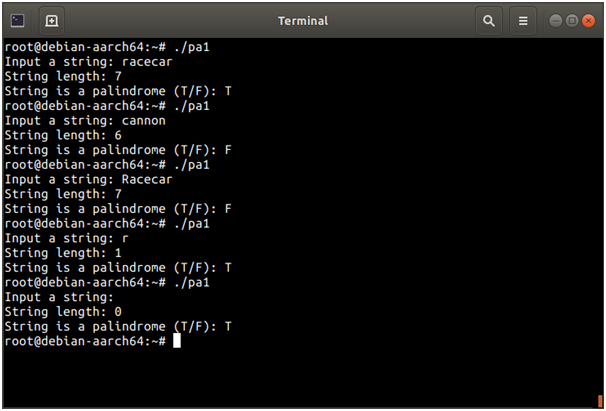Instructions
Objective
Write an Assembly language assignment program to shift string by n bits.
Requirements and Specifications
Objective
For this programming assignment, you will write an ARM program that does the following:
- Prints "input a string".
- Reads the input string.
- Calculates the length of the string.
- Outputs the string length to the console.
- Determines if the string is a palindrome.
- Outputs whether the string is a palindrome
Screenshots of output


Source Code
.section .data
input_prompt : .asciz "Input a string: "
input_spec : .asciz "%[^\n]"
length_spec : .asciz "String length: %d\n"
palindrome_spec : .asciz "String is a palindrome (T/F): %c\n"
input: .space 10 // place to save string
.section .text
.global main
# program execution begins here
main:
ldr x0, =input_prompt // load address of prompt string
bl printf // print the prompt
ldr x0, =input_spec // load address of spec to read a string
ldr x1, =input // load address of place to save string
bl scanf // read the string
# calculate length
ldr x0, =input // load input string address
mov x19, 0 // start length in zero
loop1:
ldrb w1, [x0, x19] // load character from string
cmp w1, 0 // if the character is end of string
beq endloop1 // terminate loop
add x19, x19, 1 // else increment string length
b loop1 // repeat loop
endloop1:
# print length
ldr x0, =length_spec // load address of string to print
mov w1, w19 // copy length to w1
bl printf // print the length message
# if length is <= 1, string is palindrome
cmp x19, 1
ble palindrome
# else, check if string is palindrome
ldr x0, =input // load input string address
mov w1, 'F' // by defaulf we assume string is not a palindrome
mov x2, 0 // index from start of string (0)
sub x3, x19, 1 // index from end of string (length - 1)
loop2:
ldrb w4, [x0, x2] // load character from start of string
ldrb w5, [x0, x3] // load character from end of string
cmp w4, w5 // if the characters are not equal
bne printtf // print the result, not palindrome
add x2, x2, 1 // advance start index to next char in string
add x3, x3, -1 // move end index to previous char in string
cmp x2, x3 // compare indices
blt loop2 // continue in loop if indices don't cross
// if indices cross, all other chars in front and back
// were equal so it's a palindrome
palindrome:
mov w1, 'T' // is a palindrome
printtf:
# print palindrome result T or F
ldr x0, =palindrome_spec // load address of string to print
bl printf // print the palindrome message
exit:
mov x0, 0
mov x8, 93
svc 0
ret